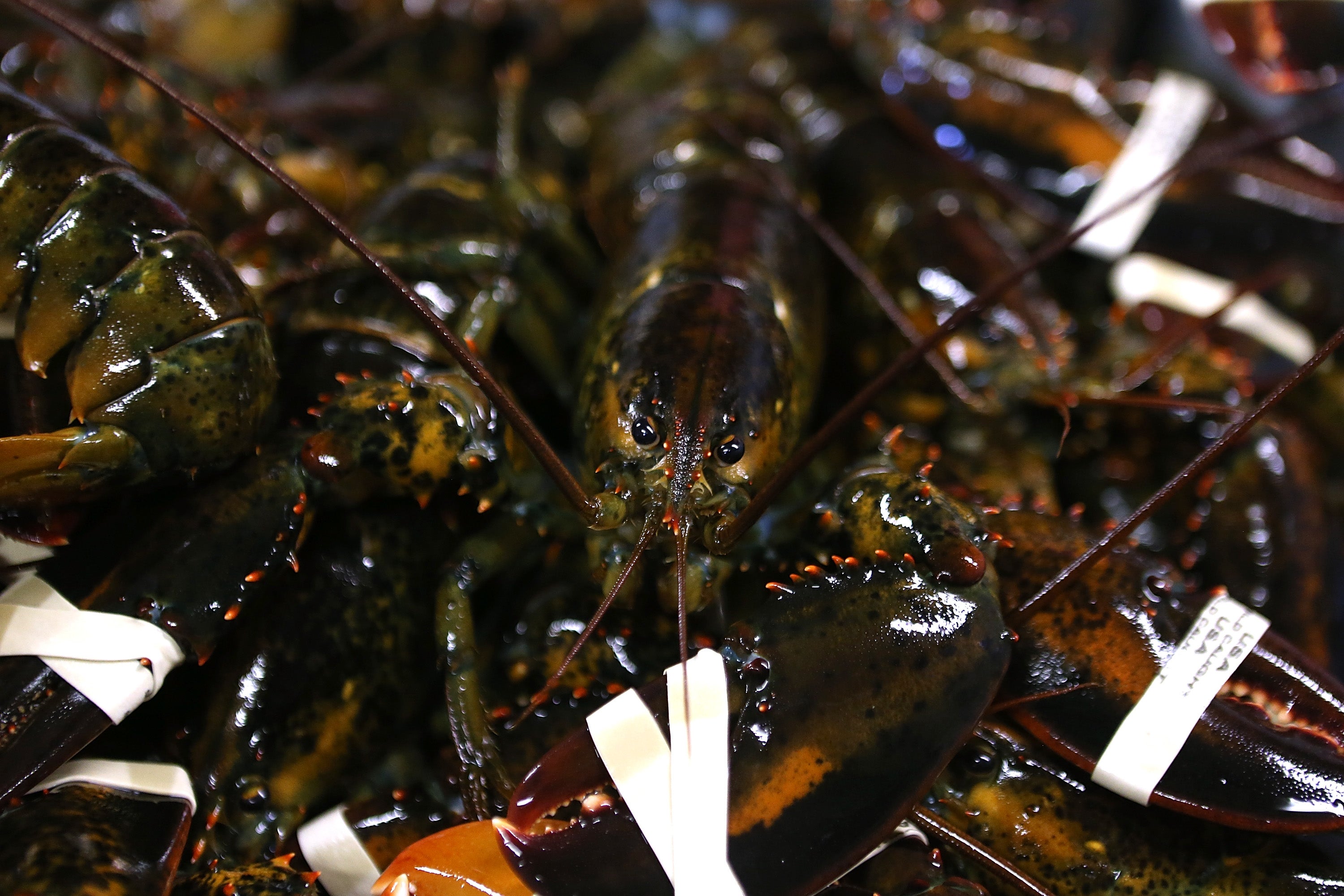Rare calico lobster saved from Virginia restaurant
‘Calico-coloured lobsters like Freckles are so rare, it was almost unbelievable that we received one’

Your support helps us to tell the story
From reproductive rights to climate change to Big Tech, The Independent is on the ground when the story is developing. Whether it's investigating the financials of Elon Musk's pro-Trump PAC or producing our latest documentary, 'The A Word', which shines a light on the American women fighting for reproductive rights, we know how important it is to parse out the facts from the messaging.
At such a critical moment in US history, we need reporters on the ground. Your donation allows us to keep sending journalists to speak to both sides of the story.
The Independent is trusted by Americans across the entire political spectrum. And unlike many other quality news outlets, we choose not to lock Americans out of our reporting and analysis with paywalls. We believe quality journalism should be available to everyone, paid for by those who can afford it.
Your support makes all the difference.Freckles is a rare catch. The odds of seeing a calico-coloured lobster like it, with its head, tail and claws dotted with dark blue and bright orange spots, is about 1 in 30 million.
And the crustacean was almost dinner at Red Lobster.
But instead of being butter-poached and served alongside cheddar biscuits, the calico lobster is headed to an exhibit in Virginia.
Employees at a Red Lobster in Manassas, Virginia, discovered the creature on 25 April as part of a shipment from Maine. Recognising the rare animal, the Virginia restaurant contacted the company. Red Lobster then contacted a zoo that had rescued a different rare lobster from one of its restaurants last summer.
“Calico-coloured lobsters like Freckles are so rare, it was almost unbelievable that we received one,” the company said in a statement sent to The Washington Post. “We are so proud of our employees for recognising that Freckles was so special - and for reaching out so we could make arrangements for rescue.”
After contacting the zoo, the company was put in touch with the Virginia Living Museum, which has a science centre, zoo and aquarium in Newport News. It sent a rescue team to Manassas on 29 April to retrieve Freckles.
“We see this as an opportunity to share nature’s anomaly with guests, as well as continue important education about sustainable seafood practices and significant conservation efforts of the American lobster fishery,” Chris Crippen, the museum’s senior director of animal welfare and conservation, said in a statement.
Robert Steneck, a professor at the University of Maine’s school of marine sciences, said it “might be close to correct” to say the calico lobster is a 1-in-30 million discovery.
Mr Steneck said in an email to The Post that about 3.5 million lobster traps are fished in Maine, and that there could be 525 million lobsters seen there each summer. That means “plenty of opportunity for lobstermen” to spot oddities.
They often notice distinctive lobsters - “any variation that is unusual” - and report them to scientists or researchers in the field, Mr Steneck said.
Ellen Goethel, an zoologist who studies invertebrates and runs an interactive oceanarium in New Hampshire, told The Post that she has a calico lobster and two blue lobsters in her tank.
Blue lobsters, Ms Goethel said, are not as rare as calico lobsters. Two kinds that are even more rare than calico are split lobsters - with different colors, split right down the middle - and albino lobsters, she said.
She said people will not often see these kinds of crustacean in a fish market because those who catch them “put them back in the water” instead of selling them.
Ms Goethel also often gets calls about rare finds, like blue or calico lobsters or “things with bizarre claws.”
“They’re conservationists, the lobstermen,” she said. “It shows the great deal of respect the fisherman have for the ocean, the fact that they’re willing to give up a piece of their livelihood.”
For Freckles, the next stop is the permanent lobster display at the Virginia Living Museum. The lobster will be added there in about a month after it clears a 30-day quarantine and a health evaluation, Red Lobster said.
Ms Goethel said that while it’s not imperative to rescue the rare lobsters because of how often they multiply, she said calico lobsters are “gorgeous, and it’s always good to be able to have something extraordinary that people haven’t seen before in an aquarium.”
“It helps them understand nature better and to respect the ocean and the animals that live in it,” she said.
The Washington Post
Join our commenting forum
Join thought-provoking conversations, follow other Independent readers and see their replies
Comments